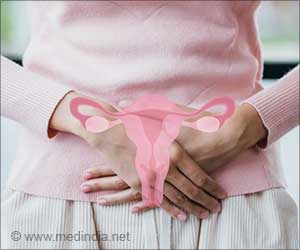Scientists at The University of Texas M. D. Anderson Cancer Center are now able to explain, in exquisite molecular detail, how the estrogen hormone can help keep breast cancer cells alive.
After years of research, scientists at The University of Texas M. D. Anderson Cancer Center are now able to explain, in exquisite molecular detail, how the estrogen hormone can help keep breast cancer cells alive.
In the Sept. 24 issue of the journal, Nature Cell Biology, they assign roles to a number of genes and proteins thought to play a part in breast cancer cell survival, and in the process, have identified potential molecular drug targets."It's a very complex story, but we have been able to bring together a number of basic discoveries from different fields of research to work out the basic mechanism by which estrogen can exert a pro-life effect on cancer cells," said the study's lead author, Edward T. H. Yeh, M.D., professor and chair of The University of Texas M. D. Anderson's Department of Cardiology.
Along the way, the researchers have provided some novel insights. One is that they have provided a role for breast cancer-associated protein 3 (BCA3), which had been recently found to be over-expressed in both breast and prostate cancers. Yeh and his team show that this protein, by itself, doesn't have any relationship to the cancer, but when modified by the protein NEDD8, can act like a tumor suppressor.
The researchers also found that SIRT1, a key protein involved in this molecular pathway, is a member of a family of proteins responsible for prolonging life span in both yeast and worms. "The fact that these molecules, which maintain life span in other species, has been found to be involved in suppressing cancer development seems important to us," Yeh said. "The reason people live longer is that they don't develop cancer as readily."
Players in this newly defined pathway are:
* BCA3, which had no known function. * NEDD8, a protein that can bind to other proteins and alter their function. * SENP8, a protease (enzyme) that can break bonds between other molecules. * SIRT1 * NFkB (Nuclear Factor kappa B), a family of proteins that turn on genes involved in cell death (apoptosis) and cell proliferation. When over-expressed, NFkB can protect cells from undergoing apoptosis, and in general, the more NFkB is expressed, the more resistant the cell is to apoptosis. * Estrogen, a hormone that acts as growth fuel for about 70 percent of breast cancers.
Advertisement
To find proteins that can be altered by NEDD8, the four-member research team used yeast as their experimental platform, and SENP8 as a tool. This enzyme is known to be able to separate NEDD8 from the proteins it binds to. In this way, they could use SNEP8 "as bait" to fish for protein complexes held together by NEDD8.
Advertisement
Then they looked at how this NEDDylation further works to suppress the ability of NFkB to transcribe (activate) other genes. Here the investigators found SITR1, the molecule known to prolong life span in several other species. SITR1 is a histone deacetylase, a protein that blocks transcription factors from regulating genes. "When NEDD8 modified BCA3, it binds to p65 and recruits SITR1 to suppress NFkB-mediated transcription," Yeh said.
Finally, the researchers discovered that estrogen blocks NEDD8 from modifying BCA3, a finding which goes some way to "explaining estrogen's pro-life effect in breast cancer cells," Yeh says. "Estrogen could enhance the survival of breast cancer cells by silencing BCA3, through eliminating its hold on NFkB transcription."
Now that this cancer-promoting molecular pathway has been described, Yeh says it might be possible to interfere with a number of the players to inhibit cancer growth. "NEDD8 is key," he said. "It may be possible to design drugs that block the removal of NEDD8 from BCA3." By increasing the amount of NEDD8-modified BCA3, there will be a corresponding decrease in the level of NFkB and the cancer cells will be more sensitive to chemotherapy, Yeh says.
"There is a lot we need to sort out, of course, but this is a model of how estrogen may function to promote growth in breast cancer that we can all now work from," Yeh says.
Source-Newswise
SRM











